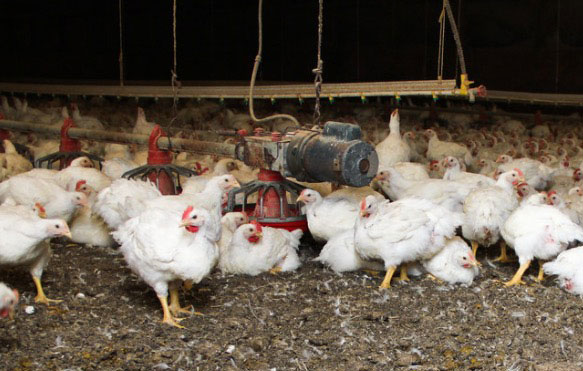Not so long ago the only way to obtain eggs was to have your own flock of chickens. Or know a farmer that had some (and most farms 100 years ago had a little bit of everything, including chickens).
Even people in urban areas routinely kept a small flock. My friends in Milwaukee say that the first owners of their 120-year-old Victorian had a small flock in the tiny backyard. It must have been far easier to collect a couple eggs per day from a home grown flock than to buy questionable eggs from a local grocery store, a time before food safety laws.
Recently when I ran out of eggs I had to buy some at the store. Almost reflexively I grabbed the cheapest dozen eggs I could see. When at home I was reminded of the lack luster quality of most commercial eggs. When broken into the fry pan the next morning the light yellow yolks quickly flattened, with several breaking on their own. The whites seemed runny and lacking of body (see big pic at top of this page for what was in my fry pan that morning). I forgot what commercial eggs looked like. Sigh, I missed my chickens' eggs.
Commercial Egg Production
Because of a whole host of factors, from the invention of the Haber-Bosch process* in the 1910's to an explosion of mechanization in agriculture starting in the 1920's to New Deal era farm programs in the 1930's, farms started getting bigger. Food was becoming easier to produce on a larger scale, with fewer people. The cost of production per unit calorie was going down.
 A typical commercial chicken farm. This one is for meat birds.
A typical commercial chicken farm. This one is for meat birds. Guess what they're standing on/in their entire lives.
Increasing the scale and efficiency of egg production was part of this picture. Once the efficiency of egg production, collection, storage, and shipping was perfected it was only a matter of time before egg farms grew to incredible sizes.
The downside? I see two:
1) Quality - just crack open a cheap commercial egg next to a free-range, small-farm egg. And I mean truly free range, where the hens have freedom to walk anywhere around the farm they like. The commercial egg is pale and flat, often with a "meh" taste.
 Commercial egg (left) vs. free range egg (right).
Commercial egg (left) vs. free range egg (right). Image from The Nourishing Gourmet.
2) Potential for rampant disease in large quantities of chickens. Housing 44 million chickens together (Ranking the Largest US Egg-Producing Companies in 2021) necessitates large quantities of vaccines, antibiotics, and medicated feed. Housing this many chickens together is a potential biohazard. How can it not be otherwise?
Which Egg is Better?
Ultimately, you have to answer this on your own.
Is quality, both of the eggs and of the chickens' lives, more important to you? Then the truly free range eggs might be a better choice, direct from the small farmer.
There's a significant price difference between these kinds of eggs, and there's a reason. Mass, factory-scale production and delivery vs. small operations that pay more for small quantities of feed, time spent hand collecting eggs, and driving them to farmers' market for buyers. After discussing chicken keeping costs with people of facebook I'd say the back-of-the-napkin calculations puts the cost of production of a typical small home flock (let's say 20 birds) at about $3 per dozen. There's no way for a small time farmer to compete on price with commercial eggs.
Then again you could just get around this whole issue by raising and tending to a few hens yourself. Definitely worth considering. Chicken keeping can be very rewarding!
Image of commercial chicken operation from Chesapeake Bay Program.
Free Range vs. Commercial Eggs, The Nourishing Gourmet.
*The Haber-Bosch process combines nitrogen, from the air, and hydrogen, from natural gas, under high pressure and temperature to make ammonia, a cheap and very effective fertilizer. Now farmers could apply cheap nitrogen fertility to crops without relying on manure from their animals.